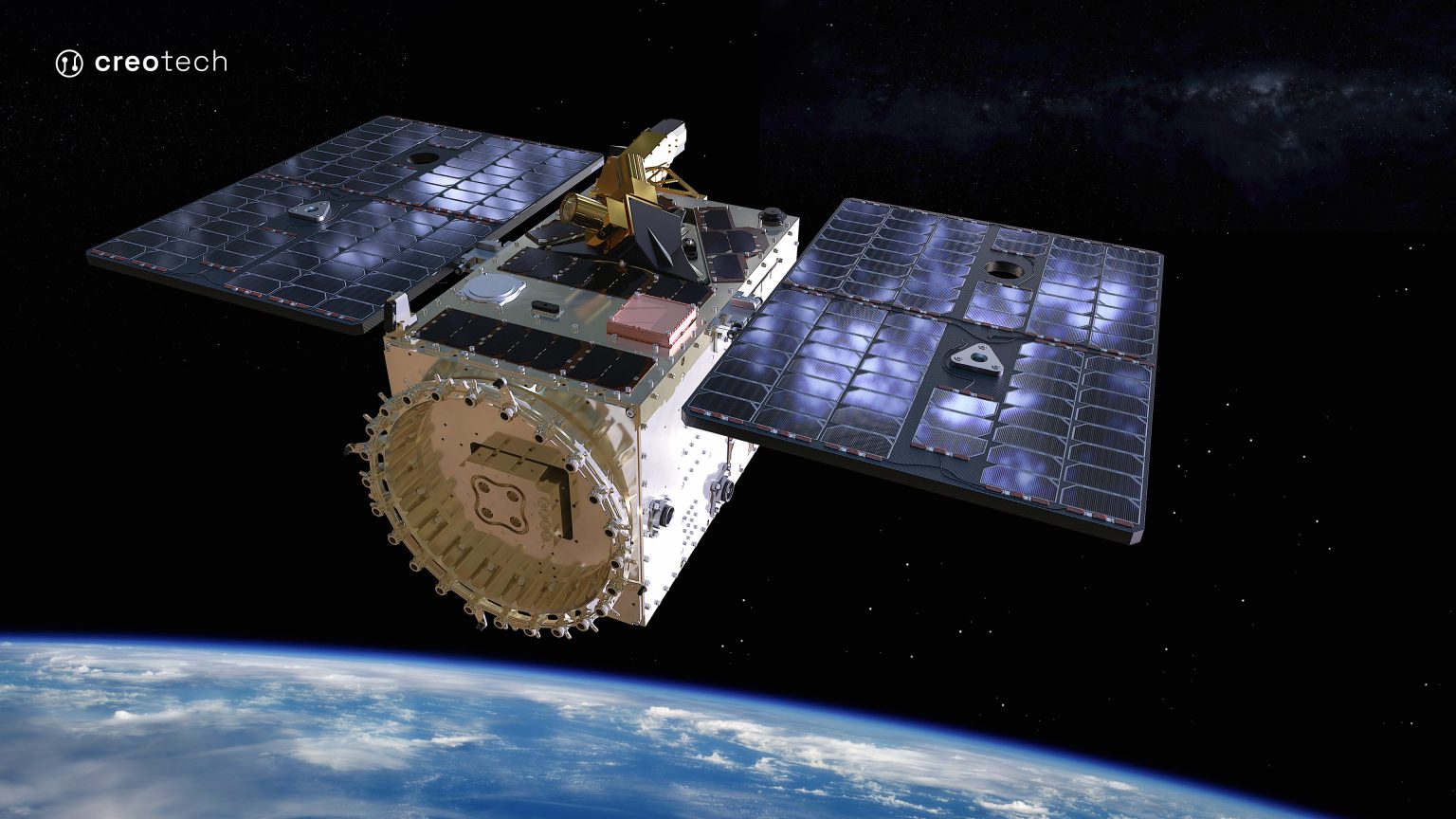
Will the electronics in EagleEye survive the space mission? NCBJ scientists conducted radiation tests of microsatellite systems
19-04-2024
Electronic systems that are part of space missions are exposed to ionising radiation, which can cause errors or even permanent damage to the entire system. For this reason, it is important to select components with adequate radiation resistance. In NCBJ, tests were carried out on systems to be used in the Polish EagleEye microsatellite.
Depending on the mission conditions, such as orbit height, duration or solar activity, satellite designers must select components with appropriate radiation resistance. In the case of purpose-built systems, so-called rad-tolerant or rad-hard, resistance testing is carried out by the manufacturer. Increasingly, however, ordinary commercially available components (commercial-off-the-shelf, COTS) are being used in the design, and verification of the system’s resistance to ionising radiation is usually left to the satellite designers. For this purpose, new methods of testing components are being developed. These can use different types and sources of radiation (protons, neutrons, electrons, X-rays, as well as mixed radiation fields), as well as involve parts of varying complexity (from individual components of the electronic system to tests of modules or even the whole satellite).
The aim of the latest research, published in a special issue of the scientific journal Electronics and carried out by a team led by Tomasz Rajkowski, Ph.D., from the Electronics and Detection Systems Division at the NCBJ, was to test the impact of the total ionising dose (TID) on systems that are part of the Polish EagleEye microsatellite and to determine the relevance of such tests in the satellite’s radiation qualification process. In addition, the tests were intended to check the repeatability of the results given a small number of samples and to indicate not only whether the systems in question are sufficiently resistant to the radiation dose to which they will be exposed in space, but also which components may be particularly vulnerable to system failure and whether they can be replaced by more durable counterparts.
The systems tested were the onboard computers, the altitude and orbit control systems, and the systems responsible for controlling the satellite’s battery. The components were exposed to a high-energy X-ray beam from a linear electron accelerator. „Although the expected dose to the satellite’s systems during the 3-year mission is about 5 krad, or 50 Gy, we irradiated up to 20 krad, checking the correct functioning of the systems every 2.5 krad” – says Tomasz Rajkowski, Ph.D., Eng. „Such a high dose relative to the expected dose increases the reliability of the results, especially associated with the small number of samples tested – two systems of each type. In addition, after the irradiation was completed, the procedure also included annealing the analysed components for several hours, both at room temperature and at 80 °C, which in many cases resulted in the restoration of lost functionalities.”
The results of the tests indicated that most of the serious failures did not occur until the dose rate exceeded 17.5 krad, which is more than three times the expected dose rate for the EagleEye satellite mission. Moreover, some of the components that showed damage below this dose were immediately replaced with more durable ones and, in subsequent tests, similar errors did not appear until the maximum dose of 20 krad. „In most cases, the tests performed enabled us to identify components that were particularly sensitive to ionising radiation during the space mission and to replace them with more resistant counterparts” – comments Rajkowski, Ph.D., Eng. „Furthermore, while we already knew that the observability of component parameters can be severely limited when testing entire systems, during our research we were able to see this in more specific cases, such as power systems with feedback loops. These systems start to malfunction when exposed to radiation – we then know that one of the components in the loop is not working, but without disconnecting the loop it is difficult to tell which one „.
For this reason, the researchers’ study highlighted that, in addition to testing entire systems, which due to cost and additional observational difficulty is usually limited to small sample sizes, complementary single-element tests are proving useful, where much higher statistics can be obtained and the test preparation itself is much simpler. On the other hand, determining the level of reliability obtained by testing a large number of complex systems (rather than single elements) is an interesting research challenge that may also find application in the development of test procedures, e.g. for large satellite constellations. This type of work has also recently been initiated at NCBJ under the NCN MINIATURA-7 grant.
The research was conducted by a team of NCBJ scientists and employees of Creotech Instruments S.A., creators of the EagleEye microsatellite, as well as Sławosz Uznański, Ph.D., a project astronaut for the European Space Agency, who is to become the second Polish man in space. Sławosz Uznański, Ph.D., also deals with issues of radiation resistance in electronics and has for years supported research into, among other things, systems designed by the creators of EagleEye.
The full results of the study are available in the publication:
Rajkowski T, Pustułka P, Bieda M, Ślasa S, Kazaniecki M, Myszka K., Szczygielski M, Iwaszkiewicz J, Traczyk K., Tarenko K., et al. System-Level Total Ionizing Dose Testing of Satellite Subsystems: EagleEye Microsatellite Case Study. Electronics. 2024; 13(1):122. https://doi.org/10.3390/electronics13010122





